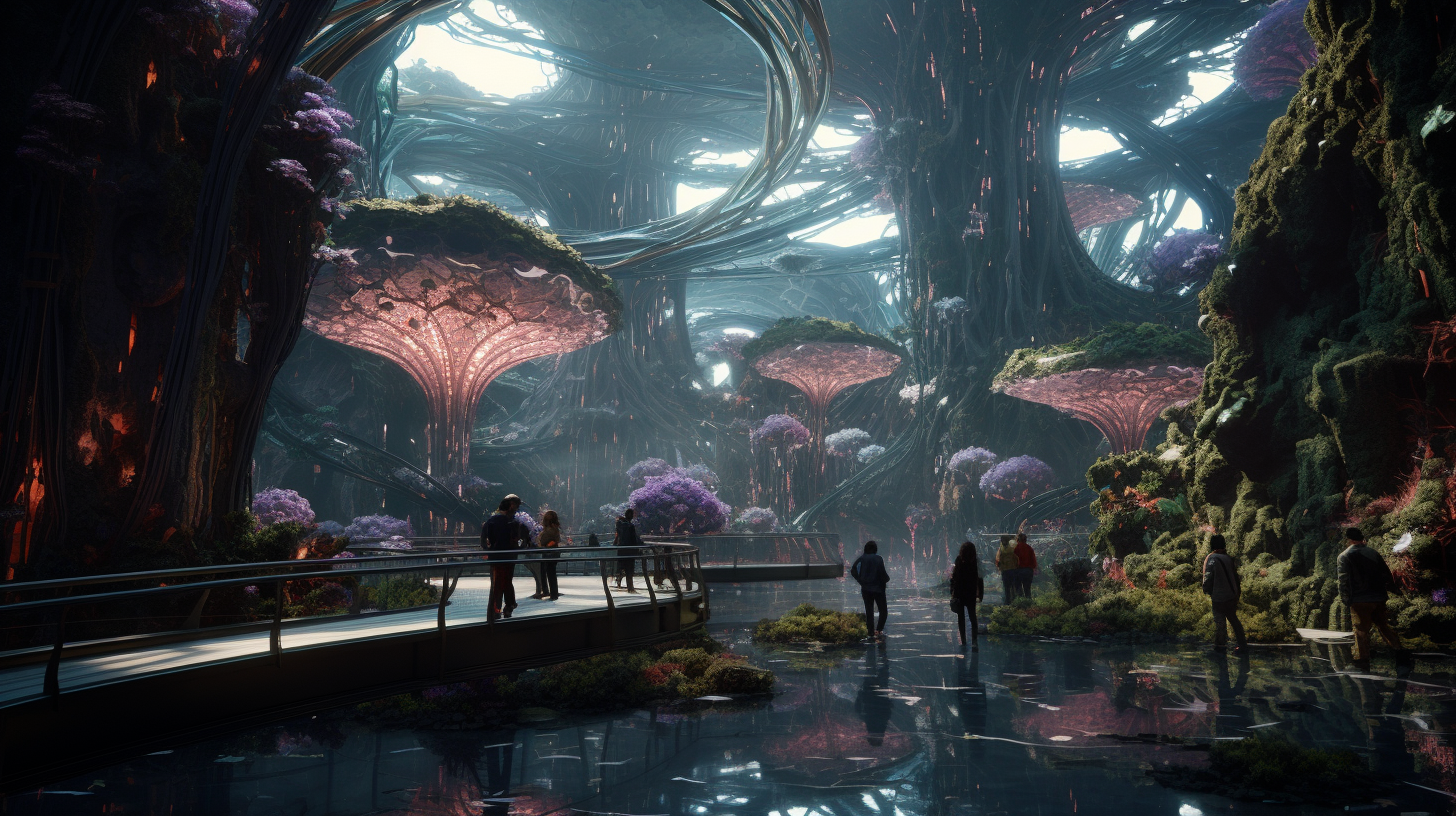Merging Realities: The 3D Revolution - Augmented Meets Virtual in Modern Tech
Discover the fascinating merger of augmented and virtual worlds as technology advances at warp speed. Explore the groundbreaking implications, applications, and future projections of this convergence.
Augmented Reality (AR) and Virtual Reality (VR) have individually garnered significant attention over the past decade. Yet, the exciting development lies in the fusion of these two realms – a phenomenon now recognized as the convergence of augmented and virtual worlds in modern tech.

The Brave New World of Merging Realities
The blending of virtual and real environments isn't a recent concept. Instead, it's been a dream in science fiction and tech enthusiast circles for years. The sheer thought of seamlessly integrating these worlds offers endless possibilities, altering how we interact with technology.
Evolution of Augmented and Virtual Realities
Historical Perspective of Augmented Reality (AR) AR isn't as contemporary as one might believe. From heads-up displays in fighter jets to the more recent mobile apps like Pokémon Go, AR has continually strived to overlay digital information onto our physical world, enhancing our perceptions.
Virtual Reality (VR): More Than Just Games VR's essence lies in its ability to immerse users in a fully synthetic environment. While its association with gaming is profound, VR's applications extend into various domains, including education, healthcare, and even space exploration.
Differences and Similarities: AR and VR
AR: Overlaying Information on the Real World Through AR glasses or smartphone apps, users can witness digital elements superimposed onto their physical surroundings. It's as if our world gets an upgrade – with pop-up information, graphics, or animations.
VR: Immersive Experiences in Virtual Environments With VR, the entire environment is virtual. Wearing a VR headset, users are transported to a different universe, be it a fantastical game realm, a far-away galaxy, or a reconstruction of ancient Rome.

Advancements Driving the Convergence
Technological Innovations Blurring the Lines With the onset of Mixed Reality (MR), the boundary between AR and VR is becoming fuzzier. MR devices allow users to see and interact with both real and virtual elements in real-time.
Growing Demand for Mixed Reality MR, the hybrid of AR and VR, offers the best of both worlds. Industries recognize its potential, leading to an upsurge in demand for its applications across diverse fields.
Applications in Today's Tech Landscape
The Gaming Arena: A New Level of Realism Games using merged realities offer unparalleled realism. Imagine a game where you physically dodge obstacles or pick up virtual objects in your living room!
Education and Training: Real-world Applications From virtual chemistry labs to AR historical reconstructions, the merged realities pave the way for enriched learning experiences.
Healthcare: Virtual Surgeries and Rehabilitation Surgeons can practice complex procedures in virtual environments, while patients use AR/VR for physical or psychological therapy.
Tourism: Explore From the Comfort of Home Merged realities enable users to virtually visit attractions, experience cultures, or even preview hotels before actual travel.
Challenges and Solutions
Ethical Implications in Merging Realities As with any technology, there are concerns, primarily about privacy and the potential for misuse. Ethical guidelines and stringent policies are vital to address these issues.
Ensuring Seamless User Experience Overcoming technical glitches, improving user interfaces, and ensuring a seamless experience is paramount for the mainstream adoption of merged realities.
Future Projections: Where are We Heading?
Futuristic Scenarios: How We Might Live Envisage a world where AR/VR assists in everyday tasks, facilitates remote collaboration, or even aids in personal relationships.
Necessary Steps for a Seamless Transition Infrastructure development, accessibility, and ensuring global standards are pivotal to embracing the benefits of merged realities fully.

FAQs
What exactly is the difference between AR and VR? While AR adds digital elements to a live view, VR represents a complete immersion experience where users are isolated from the physical world.
How does Mixed Reality fit into the AR and VR spectrum? Mixed Reality (MR) combines elements of both, allowing users to interact with both real and virtual elements concurrently.
Are there any potential dangers of merging realities? Concerns range from privacy issues, potential misuse to health implications like VR-induced motion sickness.
Which industries are benefiting most from the convergence of AR and VR? Beyond gaming, industries like healthcare, education, tourism, and even real estate are leveraging the perks of merged realities.
Is the hardware for AR and VR affordable for general consumers? While early devices were pricey, advancements and competition have made AR/VR gadgets more accessible to the public.
What's the next big thing after the convergence of AR and VR? While it's speculative, complete brain-computer interfacing or even a Matrix-like simulated reality might be on the horizon.

Conclusion: Embracing the Merged Realities
The convergence of augmented and virtual worlds in modern tech is not just a fad. It's a monumental shift in how we perceive and interact with our environment. Embracing this change paves the way for innovations, applications, and experiences we might have deemed impossible a decade ago.